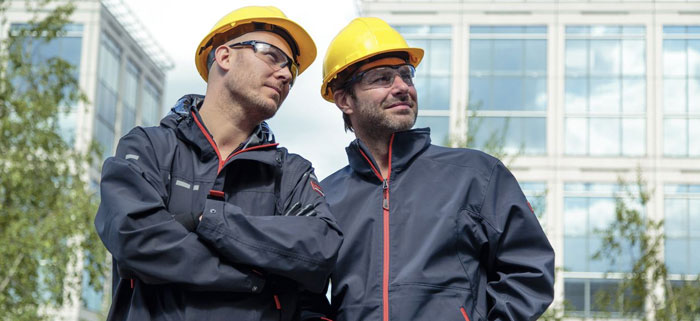Gas Detection for Emergency Services
![]()
For Emergency Service Teams, the use of portable gas detectors is essential. Toxic gases are produced when day-to-day objects (domestically) or industrial materials (as part of a required process) are burnt; meaning flammable gases and vapours may be present within a confined space even after the flames have died down or the required industrial process or cycle is complete.
When emergency services are dealing with a fire, they understand that gases like carbon monoxide (CO) and hydrogen cyanide (HCN) are bound to be present. Individually, these gases are dangerous and even deadly, however, when the two are combined, they are exponentially more dangerous and are known as the toxic twins.
 Why Carbon Monoxide is so deadly?
Why Carbon Monoxide is so deadly?
When Carbon Monoxide (CO) enters the body, it rapidly stops blood from carrying oxygen to the vital organs, particularly the heart and brain. CO is particularly dangerous as you cannot see it, taste, or smell it, but CO can quickly become chronic and kill without warning, causing death from asphyxiation or severe brain damage.
 Hydrogen Cyanide – a hidden danger
Hydrogen Cyanide – a hidden danger
Due to the heavy day-to-day use of plastics and man-made fibres, Hydrogen Cyanide (HCN) can be released at up to 200ppm in both domestic and industrial fires.
Substantial exposure to HCN may rapidly lead to unconsciousness, fitting, coma and possibly death. If a substantial exposure is survived, there may be long-term effects from damage to the brain or nervous system.
Combined with Carbon Monoxide, these two highly toxic gases cause thousands of fire-related deaths and injuries annually, so need careful consideration regarding fire gas detection.
What products can emergency services use to help detect these hidden dangers?
For Emergency Teams, the use of portable gas detectors is an essential part of their safety requirements.
 Crowcon Gas-Pro portable multi-gas detector
Crowcon Gas-Pro portable multi-gas detector
Offers detection of up to 5 gases in a compact and rugged solution. It has an easy-to-read top mount display making it easy to use and optimal for confined space gas detection.
An optional internal pump, activated with the flow plate, takes the pain out of pre-entry testing and allows Gas-Pro to be worn either in pumped or diffusion modes. In-field Pellistor changes for methane, hydrogen, propane, ethane, and acetylene (0–100% LEL, with a resolution of 1% LEL). By allowing in-field Pellistor changes, Gas-Pro detectors give users the flexibility to conveniently test for a range of flammable gases, without needing multiple sensors or detectors.
What is more, they can continue to calibrate using existing methane canisters, saving time and money. The gas sensor for hydrogen cyanide has monitoring measuring range of 0–30 ppm with a resolution of 0.1 ppm.
 Crowcon Tetra 3 portable multi-gas monitor
Crowcon Tetra 3 portable multi-gas monitor
Can detect and monitor the four most common gases (carbon monoxide, methane, oxygen, and hydrogen sulphide), but also an expanded range: ammonia, ozone, sulphur dioxide, H2 filtered CO (for steel plants) and IR carbon dioxide (for safe area use only).
 Crowcon T4 portable 4-in-1 gas detector
Crowcon T4 portable 4-in-1 gas detector
Provides effective protection against 4 common gas hazards: carbon monoxide, hydrogen sulphide, flammable gases, and oxygen depletion. The T4 multi-gas detector now comes with improved detection of pentane, hexane, and other long-chain hydrocarbons.
 Clip SingleGas Detector (SDG)
Clip SingleGas Detector (SDG)
Is an industrial gas detector designed for use in hazardous areas and offers reliable and durable fixed life span monitoring in a compact, lightweight, and maintenance-free package. Clip SGD has a 2-year life and is available for hydrogen sulphide (H2S), carbon monoxide (CO) or oxygen (O2).
Gasman is a full-function device in a compact and lightweight package – perfect for customers who need more sensor options, TWA, and data capability. It comes available with a long-life O2 sensor, and MPS sensor technology.
MPS Sensor (call for information) provides advanced technology that removes the need to calibrate and provides a ‘True LEL’ for reading fifteen flammable gases but can detect all flammable gases in a multi-species environment. Many industries and applications use or have as a by-product multiple gases within the same environment.
This can be challenging for traditional sensor technology which can detect only a single gas that they were calibrated for and can result in inaccurate reading and even false alarms which can halt process or production.
The challenges faced in multi-gas species environments can be frustrating and counterproductive. Our MPS™ sensor can accurately detect multiple gases at once and instantly identify the gas type.
The MPS™ sensor has an onboard environmental compensation and does not require a correctional factor. Inaccurate readings and false alarms are a thing of the past.
If you have any questions, we would love to hear from you. Call us today on +44 (0)845 3300 447
Based on “Keeping the Emergency Services Safe” by Crowcon






 Why Carbon Monoxide is so deadly?
Why Carbon Monoxide is so deadly? Hydrogen Cyanide – a hidden danger
Hydrogen Cyanide – a hidden danger


